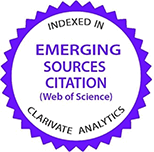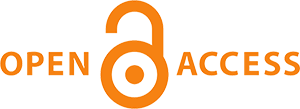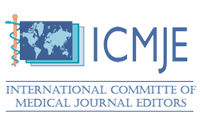Index








Applications



Membership



Volume: 8 Issue: 3 - 2020
| EDITORIAL | |
| 1. | Editorial Günnur Deniz Pages I - II |
| ORIGINAL RESEARCH | |
| 2. | IL-10-592 A/C Gene Polymorphism and Cytokine Levels are Associated with Susceptibility to Drug Resistance in Tuberculosis Atefeh Sadeghi Shermeh, Majid Khoshmirsafa, Ali-akbar Delbandi, Payam Tabarsi, Esmaeil Mortaz, Mohammad Reza Bolouri, Elham Alipour Fayez, Farhad Seif, Mehdi Shekarabi doi: 10.25002/tji.2020.1235 Pages 103 - 112 GİRİŞ ve AMAÇ: Tüberküloz (TB) ve özellikle dirençli tiplerinin tanı ve tedavisi halk sağlığı sistemine önemli bir ekonomik yüke neden olmaktadır. Bu neden ile, bu konuda araştırma yapılması Dünya Sağlık Örgütü (DSÖ) tarafından önceliği olduğu bildirilen bir konudur. Sitokinleri bağışıklık sistemi ve tüberkülozda önemli rol oynamaktadır. Özellikle tek nükleotidde saptanan polimorfizmlerin (TNP) olduğu genetik farklılıklar tüberküloza karşı bağışıklık ve sitokin üretiminde etkilidir. YÖNTEM ve GEREÇLER: Bu çalışmada, 87 hasta ve 100 sağlıklı bireyde IFN-γ (+874 T/A) ve IL-10 (-592 A/C)un genlerinin TNPleri ve bu TNPlerin oluşan sitokinlerin salınımına olan etkileri irdelendi. TB hastaları 2 ayrı gruba ayrıldı: Polimeraz zincir tepkimesi (PZT) ile ilaca hassas (İH) olduğu belirlenen 67 ve ilaca dirençli (İD) olduğu saptanan 20 tüberkülozlu hasta.TNPni saptamada PZT temelli bir metod, IFN-γ ve IL-10 düzeyleri için ise, ELISA yöntemi kullanıldı. BULGULAR: Sağlıklı bireyler ve İD TB hastalar arasında -592A/C TNP açısından istatistiksel açıdan anlamlı farklılık saptandı (p=0.011). Akciğer tüberkülozu olan olgulardaki IL-10 düzeyleri sağlıklı bireylerdekine göre yüksek olarak saptandı (p=0.02). İH TB hastalarında serum IFN-γ düzeylerinin diğer gruplardakine göre daha yüksek olduğu saptandı (p<0.001); buna karşın bu hastalarda IFN-γ 874 polimorfizmi açısından allel ya da genotip farklılığı bulunmadı. TARTIŞMA ve SONUÇ: Çalışmamız, IL-10 geninin 592.pozisyonundaki TNPnin İD-TB ile ilgili olabileceğini düşündürtmektedir. Ancak, ileri çalışmalara gerek duyulmaktadır. INTRODUCTION: Tuberculosis (TB) and especially resistant forms of it have a substantial economic burden on the community health system for diagnosis and treatment each year. Thus, investigation of this field is a priority for the world health organization (WHO). Cytokines play important roles in the relationship between the immune system and tuberculosis. Genetic variations especially single nucleotide polymorphisms (SNPs) impact cytokine levels and function against TB. METHODS: In this research SNPs in IFN-γ (+874 T/A) and IL-10 (-592 A/C) genes, and the effects of these SNPs on cytokine levels in a total of 87 tuberculosis patients and 100 healthy controls (HCs) were studied. TB patients divided into two groups: 1) 67 drug-sensitive (DS-TB) and 2) 20 drug-resistant (DR-TB) according to drug sensitivity test using polymerase chain reaction (PCR). For the genotyping of two SNPs, the PCR-based method was used and IFN-γ and IL-10 levels were measured by ELISA in pulmonary tuberculosis (PTB) and control group. RESULTS: In -592A/C SNP, only two genotypes (AA, AC) were observed and both genotypes showed statistically significant differences between DR-TB and HCs (p=0.011). IL-10 serum levels in PTB patients were higher than HCs (p=0.02). The serum levels of IFN-γ were significantly higher in DS-TB patients than that of the other two groups (p<0.001); however, no significant differences were observed for allele and genotype frequencies in IFN-γ +874. DISCUSSION AND CONCLUSION: Our results suggest that the SNP at -592 position of IL-10 gene may be associated with the susceptibility to DR-TB. However, further investigation is necessary. |
| 3. | Immune Reconstitution in the Patients with Talasemia Major after Hematopoietic Stem Cell Transplantation Baran Erman, Başak Adaklı Aksoy doi: 10.25002/tji.2020.1339 Pages 113 - 119 Giriş: Beta‐talasemi (β‐TM) otozomal resesif kalıtım gösteren, dünyada en yaygın hematolojik hastalıklardan birdir. Hematopoietik kök hücre transplantasyonu (HKHT) tek tedavi edici yöntem olduğundan transplantasyon sonrası hücresel immün yeniden yapılanmanın belirlenmesi başarılı klinik sonuçların anlaşılması için kritik öneme sahiptir. Bu çalışmada kök hücre transplantasyonu yapılan pediatrik yaş grubu talasemi major hastalarında lenfoid seri hücrelerin yeniden yapılanması değerlendirilmiştir. Gereçler ve Yöntemler: Kök hücre transplantasyonu yapılan 20 beta talasemili hasta çalışmaya dahil edilmiştir. Hastaların klinik ve laboratuvar bilgileri geçmişe yönelik değerlendirilmiştir. Bulgular: Transplantasyondan bir sene sonra, tüm hastalar sağ ve kan transfüzyonuna gerek duymayan bir durumdadır. Hastaların büyük çoğunluğunda CD4+ T hücre yapılanması düşüktür ve CD4+/CD8+ hücre oranları bozulmuştur. Diğer lenfoid seri hücrelerinin yüzde ve sayıları 12 ay içinde genel olarak normal değerlere ulaştı. On yedi hastada tam donör kimerizmi görülürken yalnızca 3 hastada karışık donör kimerizmi saptandı ve yüzdeleri %5586 arasında değişmekte idi. Sonuç: Başarılı klinik sonuçlar ve immün yeniden yapılanmaya rağmen hastaların dikkatli takip edilmesi gerekmektedir. Çünkü CD4+ T hücrelerin yapılanmasının düşük olması hastalarda ciddi enfeksiyon riski yaratabilir. Introduction: Beta‐thalassemia (β‐TM) is one of the most common, autosomal recessive inherited hematologic disorder in the world. Since hematopoietic stem cell transplantation (HSCT) is the only curative treatment, determination of cellular immune reconstitution is crucial for understanding of a successful clinical outcome. Here, we evaluated lymphoid reconstitution in pediatric patients with thalassemia major after stem cell transplantation. Material and Methods: The study included 20 patients with beta‐thalassemia major who underwent HSCT. We assessed the clinical and laboratory information of the patients retrospectively. Results: After one year from transplantation, all patients were alive and blood transfusion independent. CD4+ T cell recovery was poor and CD4/CD8 ratio was impaired in the vast majority of the patients. Percentages and absolute counts of the other lymphoid cells generally reached the normal levels within 12 months. Seventeen patients had full donor chimerism while only 3 of 20 had low chimerism levels ranging between 5586%. Conclusion: Although a successful clinical course and immune reconstitution were observed, the patients should be followed up carefully. Because, the poor engraftment of CD4+ T lymphocytes may lead severe infections in the patients. |
| 4. | Cytokine Secretion and Proliferative Capacity of CD4+ T Cells in Delayed Type Hypersensitivity Reactions due to Ciprofloxacin Belkıs Ertek, Semra Demir, Umut Can Küçüksezer, Leyla Pur Özyiğit, Aslı Gelincik, Suna Büyüköztürk, Günnur Deniz, Esin Aktaş Çetin doi: 10.25002/tji.2020.1347 Pages 120 - 128 GİRİŞ ve AMAÇ: Giriş: Siprofloksasin (SPFX), en yaygın kullanılan kinolon grubu antibiyotiklerden olup, kutanöz ters ilaç reaksiyonları oluşturabilme kapasitesine sahiptir. Gecikmiş tip aşırı duyarlılık reaksiyonlarında (ADR) kesin tanı konulması zor olmakla beraber in vitro tanı testlerinin geç tip ilaç ADRde kullanımı önemlidir. Çalışmamızda SPFXe bağlı geç tip ADR geçiren hastalarda, ilaçlar ile uyarılmış CD4+ T hücrelerinde, hücre içi sitokin üretimleri ve lenfosit transformasyon (LTT) yanıtları araştırılmıştır. Gereç ve Yöntemler: Çalışmaya SPFX ile geç tip hipersensitivite reaksiyonu (n=8) geçiren hastalar ve sağlıklı kontroller (n=10) dâhil edilmiş, intradermal testler ve yama testleri uygulanmıştır. LTT metodu ile SPFXe özgül CD4+ T hücre proliferasyonu belirlenmiştir. SPFXe özgül CD4+ T hücrelerinde hücre içi IL-4, IL-10, IL-2 ve IFN-γ düzeyleri akan hücre ölçer kullanımı ile değerlendirilmiştir. Kültür üst sıvılarındaki sitokin düzeyleri ELISA aracılığı ile ölçülmüştür. Bulgular: Geç tip ADR geçiren hastalarda 5 ve 10 μg/ml SPFX uyarımı CD4+ T hücre proliferasyonunu arttırmıştır (p=0.014 ve p=0.05, sırasıyla). IL-2 (p=0.02, p=0.001 ve p=0.001, sırasıyla) ve IL-4 (p=0.001) salgılayan CD4+ T hücre yüzdesi artmasına rağmen IFN-γ+ (p=0.001, p=0.011 ve p=0.012, sırasıyla) ve IL-10+ (p=0.001, p=0.001 ve p=0.002, sırasıyla) CD4+ T hücre oranları azalmıştır. Hücre kültür üst sıvılarında SPX uyarımından bağımsız olarak, hastalarda IL-10 düzeyi (p<0.000, p=0.004, p=0.001 ve p=0.0001, sırasıyla) azalırken, IL-4 düzeyi (p=0.003, p=0.013 ve p=0.0001, sırasıyla) artmıştır. İntradermal test uygulanan hastaların sadece birinde pozitif yanıt saptanır iken, yama testlerinde pozitif sonuç elde edilmemiştir. Sonuç: Bulgularımız, IL-2 ve IL-4 üreten CD4+ T hücrelerindeki artışla birlikte IL-10 ve IFN-γ üreten CD4+ T hücrelerindeki azalmanın, gecikmiş tipte CPFX alerjisine sahip hastalarda DTHR ile ilişkili olduğunu düşündürmektedir. LT ile birlikte hücre içi sitokin ölçümleri, in vivo testlerin negatif kaldıkları, karar verdirici olamadıkları ve hatta uygulanamadıkları durumlarda, gecikmiş tipte CPFX hipersensitivitesinin değerlendirilmesinde fayda sağlayabilir. YÖNTEM ve GEREÇLER: BULGULAR: TARTIŞMA ve SONUÇ: INTRODUCTION: Introduction: Ciprofloxacin (CPFX), a frequently prescribed quinolone, may induce cutaneous adverse drug reactions. Delayed type hypersensitivity reactions (DTHR) are often difficult to deal with, therefore, in vitro testing for DTHR is the long-anticipated method for their management. This study aimed to evaluate potential value of lymphocyte transformation test (LTT) and intracellular cytokine secretion of drug stimulated CD4+ T cells in patients with DTHR against ciprofloxacin. Material and Methods: Patients experienced DTHR with CPFX (n=8) and healthy subjects (n=10) were enrolled. CPFX skin prick, patch and intradermal tests were performed. LTT by flow cytometry aimed to determine CPFXspecific CD4+ T cell proliferation. Intracellular IL-4, IL-10, IL-2 & IFN-γ levels were analysed by flow cytometry in CPFX-specific CD4+ T cells. Cytokine contents of cell culture supernatants were evaluated by ELISA. Results: In patients with DTHR, 5 and 10 μg/mL CPFX induced significant CD4+ T cell proliferation (p=0.014 and p=0.05, respectively). IL-2 (p=0.02, p=0.001 and p=0.001, respectively) and IL-4 (p=0.001) secreting CD4+ T cell percentages were increased, while IFN-γ+ (p=0.001, p=0.011 and p=0.012, respectively) and IL-10+ (p=0.001, p=0.001 and p=0.002, respectively) CD4+ T cells were decreased. The cell culture supernatants revealed downregulated IL-10 (p<0.000, p=0.004, p=0.001 and p=0.0001, respectively) and upregulated IL-4 levels (p=0.003, p=0.013 and p=0.0001, respectively) in patients, regardless of CPFX stimulation. Intradermal test was positive in only one patient while all patch tests remained negative. Conclusion: Our findings suggest that the increase of IL-2 and IL-4-secreting CD4+ T cells together with the decrease of IL-10 and IFN-γ-secreting CD4+ T cells is related to DTHR seen in patients with delayed-type CPFX allergy. Intracellular cytokine measurement, together with LTT could ease the management of CPFX hypersensitivity when in vivo tests are non-available, remain inconclusive or negative. METHODS: RESULTS: DISCUSSION AND CONCLUSION: |
| 5. | Evaluation of Immunoglobulins, CD4/CD8 T Lymphocyte Ratio and Interleukin-6 in COVID-19 Patients Marwan Mahmood Saleh, Abduladheem Turki Jalil, Rafid A. Abdulkereem, Ahmed Aduljabbar Suleiman doi: 10.25002/tji.2020.1347 Pages 129 - 134 Giriş: Çinde 2019 yılı sonlarına doğru başlayan Yeni Koronavirüs Hastalığı (COVID-19) hızla tüm dünyaya yayıldı. Bu çalışmada, COVID-19 olan hastaların serumlarındaki interlökin-6 (IL-6) düzeyleri, değişen lenfosit alt-grupları ve antikorlar araştırılarak bu patojenin daha net anlaşılması ve yeni biyobelirteçlerin geliştirilşmesi amaçlandı. Gereç ve Yöntemler: Hastalardan herhangi bir ilaç kullanmadan önce venöz kan örnekleri toplandı. Bu kanlardan serumlar elde edildi ve bu serumların irdelenmesine kadar (-20°Cde) saklandı. Serumdaki SARS-Cov-2ye karşı gelişmiş immünoglobulinler (IgG, IgA ve IgM) ve IL-6 düzeyi ELISA testi ile ölçüldü. Bulgular: Kontrol grubu ile karşılaştırıldığında, COVID-19 hastalarında IgM (p=0.001), IgG (p<0.0001) ve IgA (p<0.001) seviyeleri anlamlı derecede azaldı. Benzer şekilde CD3+ ve CD4+ T hücreleri kontrollere göre anlamlı dercede düşük saptandı (p<0.0001). CD19+ B hücreleri ve CD4+/CD8+ hücre oaranları kontrol grubuna göre daha düşük (p<0.0001), buna karşılık CD56+ hücrelerde artış saptandı. Sonuçlar: COVID-19 hastalarında IgM, IgG ve IgA düzeyleri ile CD19+ ve CD4+/CD8+ hücrelerin oranı sağlıklı kontrollere göre daha düşük, CD8+, CD3+, CD4+ ve IL-6 düzeyleri daha yüksek olarak saptanmıştır. Introduction: The outbreak of novel coronavirus COVID-19 infections that started in China late 2019 has spread rapidly and cases have been recorded worldwide. So, in this study, we sought clarification of the clinical characteristics and importance of changing the lymphocyte group, antibodies, CD markers, and interleukin-6 in the serum of COVID-19 patients, which may help to clarify the pathogen and develop new biomarkers. Material and Methods: Venous blood samples had been accumulated from patients before taking any medications. Sera had been separated and saved at (-20°C) until analysis. Serum anti-SARS-CoV-2 immunoglobulins (IgG, IgA, and IgM) were determined in plasma samples using enzyme-linked immunosorbent assays (ELISA) and Serum IL-6 was assessed. Results: Median IgM (p=0.001), IgG (p<0.0001), and IgA (p<0.001), were decreased in patients comparing with control the control group. There is a significant decrease in CD3+ and CD4+ cells compared to healthy individuals in patients infected with COVID-19 (p<0.0001). CD19+ cell count decreased in COVID-19 patients compared to that of the control group (p<0.0001). After calculating CD4+/CD8+ cell ratio decreased in COVID-19 patients (p<0.0001). However, CD56+ cells were found to be increased (p<0.0001). Conclusions: IgM, IgG, IgA levels and CD19+, CD4+ cells, CD4+/CD8+ cell ratio were found to be decreased whereas CD8+, CD3+, CD4+ cells were detected to be increased in COVID-19 patients compared to those of healthy controls. |
| 6. | Frequency of Autoantibodies Against 3-Deoxyglucosone H1 Protein in Type 2 Diabetes Jalaluddin M. Ashraf, Shahnawaz Rehman doi: 10.25002/tji.2020.1347 Pages 135 - 143 Giriş: İleri-glikasyonlanmış son ürün (İGS)ler diabette komplikasyonların gelişimine katkıda bulunur. İGSlerin antijenik özellikte olmaları, diabet olan hastalarda otoimmüniteyi tetikleyebileceklerini düşündürtmektedir. 3-deoksiglikazon gibi glikalleyici ajanlar, diabetik hastalarda daha fazla İGS birikimine ve böylece bazı patofizyolojik durumlara yol açıyor olabilir. Bu çalışmada glikallenmiş H1 histon proteini ve İGSlerin (pentosidin ve N-karboksimetillizin) bağışıklığı uyarma özelliğini ve tip 2 diabeti olan hastalarda otoantikorların çalışılması planlanmıştır. Gereçler ve Yöntemler: Dişi tavşanlara bağışıkl yanıtını uyarmak için doğal ve glikasyon olmuş H1 injekte edildi. Diabet olan deneklerin serumlarında immünohistokimyasal yöntem ile ve glikasyon olmuş H1e İGSye karşı otoantikorlar araştırıldı. Bulgular: Glikasyonlu-H1, doğal H1in tersine bağışıklığı çok iyi uyarır bulundu. Dibetli deneklerden alınan serumların %48inde (150 örneğin 72sinde) glikasyonlu-H1e karşı antikor bulunur iken, İGSye karşı %40 (150 örneğin 40ında), pentosisidine karşı ise %36 hayvanda antikor saptandı. Sonuçlar: Bulgulara göre, değiştirilmiş H1 ve İGS doğal olarak bağışıklığı oldukça kuvvetli bir şekilde uyarmaktadır. Glikasyonlu-H1 ve İGSye karşı oluşan otoantikorlar, diabet ya da komplikasyonlarının saptanmasında kullanılabilir. Introduction: Advanced glycation end-products (AGEs) are contributing factors to diabetes complications. The antigenic nature of AGEs established the theory of incessant accumulation of AGEs can incite an autoimmune response in a diabetic patient. Glycating agents like 3-deoxyglucosone are increased in diabetic patients, leading to the high formation of AGEs aggravating the pathophysiological conditions in diabetes. We aimed to study the immunogenicity of glycated histone H1 protein and AGEs (N-carboxymethyl-lysine and pentosidine) as well as detection of autoantibodies in the sera of type 2 diabetic subjects. Materials and Methods: Female rabbits were injected with native H1 and glycated-H1 to discern its immunogenicity. Diabetic subjects sera were also scanned for the detection of autoantibodies against glycated-H1 and AGEs using immunochemical assay technique. Results: Glycated-H1 was highly immunogenic, unlike the native analog. Diabetic sera showed 48% (72 of 150 samples) significantly strong binding with glycated-H1, further sera also showed 40% (60 of 150 samples), and 36% (54 of 150 samples) strong binding with CML, and pentosidine, respectively. Conclusion: The findings support modified H1 as well AGEs are highly immunogenic in nature. The presence of autoantibodies against glycated-H1 and AGEs may be utilized in the assessment of diabetes or its complications. |
| REVIEW ARTICLE | |
| 7. | Gene Regulation of MHC Class-I and MHC Class-II Şule Karataş, Fatma Savran Oğuz doi: 10.25002/tji.2020.1364 Pages 144 - 156 Giriş: Hücre içi ve hücre dışı antijenlerin işlenmesiyle elde edilen peptitler, immün yanıtı uyarmak amacıyla T hücrelerine sunulur. Bu sunum major doku uygunluk kompleksi (MHC) molekülleri adı verilen peptit reseptörleri tarafından yapılır. İmmün yanıttaki rolleri benzer olan MHC moleküllerinin özellikle gen düzeyindeki düzenlenme mekanizmaları sınıfına göre belirgin farklar içermektedir. Amaç: Altıncı kromozomun kısa kolunda bulunan MHC genleri tarafından kodlanan MHC sınıf I ve sınıf II molekülleri, T hücresi yanıtını uyaran peptid reseptörleridir. Kaynaklandıkları antijenin tanınmasını sağlayacak olan bu peptitler, MHC moleküllerine yüklenir ve T hücrelerine sunulur. Peptitleri yükleme ve sunma ilkeleri her iki molekül için benzer olsa da, peptit kaynakları ve peptit yükleme mekanizmaları farklıdır. Ek olarak, MHC sınıf I molekülleri tüm çekirdekli hücrelerde ifade edilirken, sınıf II moleküller yalnızca Antijen Sunan Hücrelerde (ASH) ifade edilir. Tüm bu farklılıklar; MHC sınıf Iin MHC sınıf II ile tam olarak aynı transkripsiyonel mekanizmalarla ifade edilmediğini göstermektedir. Yazımızda her iki sınıfın gen ifadelerini karşılaştırıp benzerliklerin ve farklılıkların tartışılması amaçlanmıştır. Tartışma ve Sonuç: Bir çok hastalığın immünolojik temelini oluşturan MHC moleküllerinin transkripsiyonel mekanizmalarının daha iyi anlaşılması, bu moleküllerin hastalıklardaki rolünü daha net ortaya koyacaktır. Derlememizde mevcut bilgiler ışığında MHC genlerinin düzenlenmesi mekanizmalarını MHC sınıfına özgü bir şekilde ele alarak, bu konuda yapılacak olan sonraki araştırmalara katkıda bulunulması amaçlanmıştır. Introduction: Peptides obtained by processing intracellular and extracellular antigens are presented to T cells to stimulate the immune response. This presentation is made by peptide receptors called major histocompatibility complex (MHC) molecules. The regulation mechanisms of MHC molecules, which have similar roles in the immune response, especially at the gene level, have significant differences according to their class. Objective: Class I and class II MHC molecules encoded by MHC genes on the short arm of the sixth chromosome are peptide receptors that stimulate T cell response. These peptides, which will enable the recognition of the antigen from which they originate, are loaded into MHC molecules and presented to T cells. Although the principles of loading and delivering peptides are similar for both molecules, the peptide sources and peptide loading mechanisms are different. In addition, class I molecules are expressed in all nucleated cells while class II molecules are expressed only in Antigen Presentation Cells (APC). These differences; It shows that MHC class I is not expressed by exactly the same transcriptional mechanisms as MHC class II. In our article, we aimed to compare the gene expressions of both classes and reveal their similarities and differences. Discussion and Conclusion: A better understanding of the transcriptional mechanisms of MHC molecules will reveal the role of these molecules in diseases more clearly. In our review, we discussed MHC gene regulation mechanisms with presence of existing informations, which is specific to the MHC class, for contribute to future research. |




